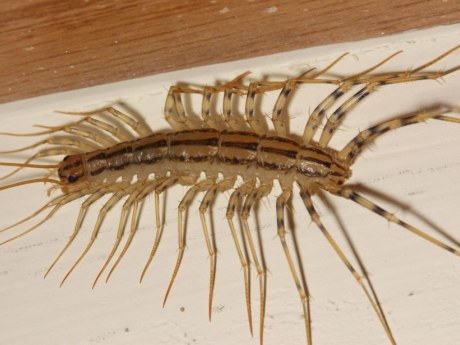Why Are House Centipedes In My Home?
These insects feed on other insects, but more often than not, they merely lurk in the shadows waiting to spring out and frighten you. They thrive in dark, damp environments and are most active at night, however you can catch sight of them during the day if you happen across one of their hiding or sleeping spots. They favor the dark, damp conditions found beneath your basin or in your tub, so you may discover them there sometimes. They are often scarce in the winter months (they like moderate regions), but the spring will mean you see them more. As the fall months go and temperatures drop, they may seek shelter inside. They look for wet areas during dry spells, too.
House centipedes don’t do much harm, unlike moths (which eat wool and grain), termites (which infest wood), and silverfish (which consume fabric fibers, glue, and paper). They are also not transporters for illness like mosquitoes. There are, however, worse insects to have in your house, despite the fact that their rapid movement might scare residents.
Advertisement
Say Goodbye To House Centipedes
Your home may become less of a haven for house centipedes if you take preventative steps, and the pests may ultimately depart on their own. You can prevent house centipedes from making your home their new habitat by implementing a few simple measures.
Reduce the humidity in your home
Humidity reduction is the first step in avoiding house centipedes, just as it is with silverfish. While house centipedes are less active in the winter, many people still use humidifiers for health reasons, so this shouldn’t be a problem when taking preventative measures. When the weather is warmer, a dehumidifier might reduce the number of house centipedes. Fixing leaking pipes and maintaining a dry basement and attic are of utmost importance as well.
Close off any openings
Sealing gaps around windows is one way to prevent house centipedes from entering the home.
Dry up any damp areas
Locate any wet spots around the house’s entrance. To stop rain from seeping into your house, you should get rid of leaves and plants and seal any crevices.
Advertisement
